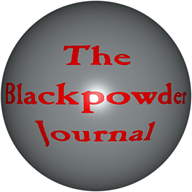The History Of Black Powder
Moira Kindig
A story of powder that changed history
Black powder was introduced to America about three hundred
years ago in 1675 with the founding of Milton Mill near
Boston, MA. As a general rule though, the American powder
was of lower quality. England still restricted the
manufacturing and accumulation of black powder among the
colonists. It was not until the American Revolution, when
rebels discovered they had a very limited supply, that small
mills sprang up in the forests to aid the American cause.
After the war, the powder mills continued, but English
powder, though more expensive, was still a better quality.
Nothing changed until Irénée du Pont decided that the United
States needed to improve its powder industry. The first
DuPont powder was produced in 1804 and they quickly became
the leading American powder producer. Laflin & Rand and the
Hazard Powder company eventually joined the production scene
and together the three dominated the industry. An
explosion, in the early 1970s, destroyed the DuPont plant.
The company decided to abandon the black powder industry and
sold their whole operation to Gearhart-Owen.
Gunpowder today is essentially made with the same formula
that they used in the 19th century. After the three major
ingredients (potassium nitrate, carbon and sulfur) are
pulverized, they are mixed with water and alcohol. They are
compressed into cakes and those cakes are later broken into
smaller chunks and granules by rollers. All equipment that
comes in contact with the powder, or its components, are
made out of non-sparking material to prevent accidents.
The four most common granulations are Fg (which is the
largest), FFg, FFFg and FFFFg. The varying granules are
separated by using different size vibrating screens. The
black powder is then packaged and ready for market.
For more information on the safe use of black powder for
firearms use, contact the Log Cabin Shop at (330) 948-1082.
The Log Cabin Shop specializes in black powder firearms and
accouterments of the pre-1860 era. A 200-page catalog is
available for $5.00. To place an order for our catalog, call
our toll free order line at (800) 837-1082.

